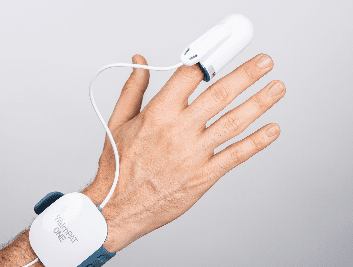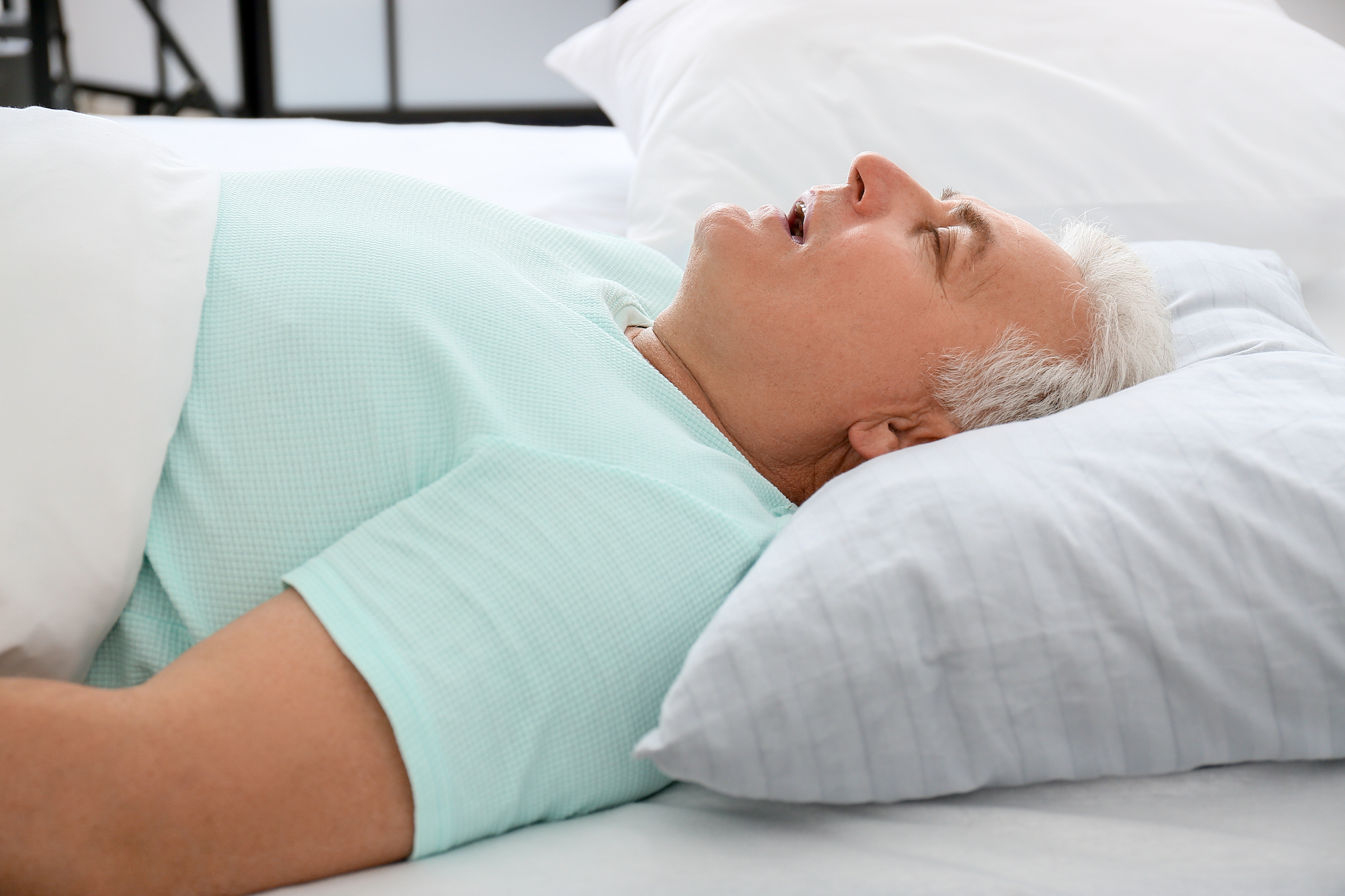Hypercapnia, also called hypercarbia, occurs when too much carbon dioxide (CO2) accumulates in a person’s bloodstream. Medical conditions can interfere with the body’s ability to regulate CO2 in the blood and contribute to hypercapnia, including sleep apnea.
For people with sleep apnea and other health conditions that are associated with hypercapnia, knowing the effects of excess CO2 in the blood can help them recognize the symptoms and seek appropriate medical attention.
Think You May Have Sleep Apnea? Try an At-Home Test

our partner at sleepdoctor.com
Save 45% on your Sleep Test Today
Shop now“Truly grateful for this home sleep test. Fair pricing and improved my sleep!”
Dawn G. – Verified Tester
What Is Hypercapnia?
Hypercapnia refers to elevated levels of carbon dioxide (CO2) in the bloodstream. Carbon dioxide is a waste product from energy production in the body. Normally, CO2 travels from the body’s tissues through the blood and is exhaled from the lungs.
Carbon dioxide can build up in the blood due to an overproduction of CO2 in the body or inadequate removal of CO2 by the lungs. Hypercapnia can also be caused by exposure to excessive CO2 in a person’s environment.
The presence of hypercapnia may signal an underlying health condition. Left untreated, hypercapnia can negatively affect a person’s brain and cardiovascular system. Because carbon dioxide turns into an acid, hypercapnia can also cause the blood and other body fluids to become too acidic.
Hypercapnia Symptoms
Symptoms of hypercapnia vary based on the cause of excess carbon dioxide in the blood and whether the condition occurs suddenly or persists over time.
Hypercapnia can cause a variety of symptoms, including:
- Shortness of breath
- Fatigue
- Nausea or vomiting
- Flushed skin
- Headache
- Anxiety or irritability
In more severe cases, symptoms of hypercapnia may also include:
- Confusion or disorientation
- Paranoia
- Depression
- Sleepiness that can progress to coma
- Involuntary movements, including jerking or twitching
- Fainting
- Seizures
Hypercapnia Causes
Experts believe that most cases of hypercapnia are caused by conditions that interfere with the lungs’ ability to exchange oxygen for carbon dioxide. Conditions that reduce the amount of gas exchanged in the lungs include:
- Pulmonary embolism
- Pulmonary vascular disease
- Chronic obstructive pulmonary disease (CODP)
- Asthma
- Interstitial lung diseases
Other health conditions can limit breathing, which then reduces oxygen and increases carbon dioxide in the blood. Conditions that may limit breathing and trigger hypercapnia include a variety of disorders that affect the spinal cord, chest and ribcage, or metabolism. Other conditions that may reduce respiration include:
- Overdose of prescription or illicit sedatives
- Stroke
- Sleep apnea
- Obesity
- Certain infections, toxins, and poisons
Other health conditions can increase the amount of CO2 produced by the body. While these conditions may contribute to hypercapnia, experts believe that they are rarely the primary cause of elevated CO2 in the blood. Conditions that increase the production of CO2 in the body include:
- Fever
- Sepsis
- Overfeeding
- Exercise
In addition, excessive exposure to CO2 in the environment may put people at risk for hypercapnia. People may be exposed to significant CO2 during surgical procedures and in enclosed space without good circulation.
Hypercapnia and Sleep Apnea
Hypercapnia is a potential complication of sleep apnea. Sleep apnea is a condition in which breathing becomes temporarily limited or stops during sleep. When breathing is reduced due to sleep apnea, carbon dioxide can accumulate in the bloodstream and cause hypercapnia.
Diagnosing Hypercapnia
Hypercapnia can be diagnosed with a blood test called an arterial blood gas analysis. This test measures the amount of carbon dioxide and oxygen in the blood, as well as the blood’s pH or level of acidity. Usually, the blood for this test is collected from an artery in the wrist, arm, or groin.
In some cases, a venous blood gas analysis may be conducted instead. The blood sample for this test is taken from a vein, rather than an artery. A venous blood gas analysis can determine the pH of the blood, but only provides an estimate of carbon dioxide.
After detecting hypercapnia and stabilizing a person’s breathing, doctors will likely collect a detailed medical history and perform a physical exam to diagnose the underlying cause of elevated CO2. Tests that may be used to determine the cause of hypercapnia include:
- Metabolic panel
- Complete blood count
- Screening for drug use
- Thyroid function testing
- Imaging of the chest, brain, and spinal cord
Hypercapnia Treatment
Treatment for hypercapnia involves stabilizing a person’s breathing to remove excess carbon dioxide from the bloodstream. There are several methods that doctors may use to stabilize breathing.
- Bi-level positive airway pressure (BiPAP or BPAP): BiPAP is a form of breathing assistance that delivers pressurized air through a mask placed over the nose, mouth, or both. The pressure is higher when a person inhales and lower when they exhale.
- Continuous positive airway pressure (CPAP): CPAP is another type of breathing assistance. Like BiPAP, CPAP delivers pressurized air into the lungs, but at a relatively consistent level of pressure for both inhalation and exhalation compared to BiPAP.
- Mechanical ventilation: In more severe cases of hypercapnia, such as when a person is not alert or awake, intubation with mechanical ventilation may be necessary. In this procedure, a tube is placed in the person’s windpipe and connected to a machine called a ventilator.
Once breathing is stabilized, health care providers attempt to diagnose and treat the underlying cause of hypercapnia to prevent additional CO2 from building up in the blood.
When to See a Doctor
It is important to talk to a doctor if you have difficulty breathing or experience symptoms of hypercapnia, like shortness of breath or confusion. If breathing difficulties are abrupt or severe, call a local emergency number, such as 911.









